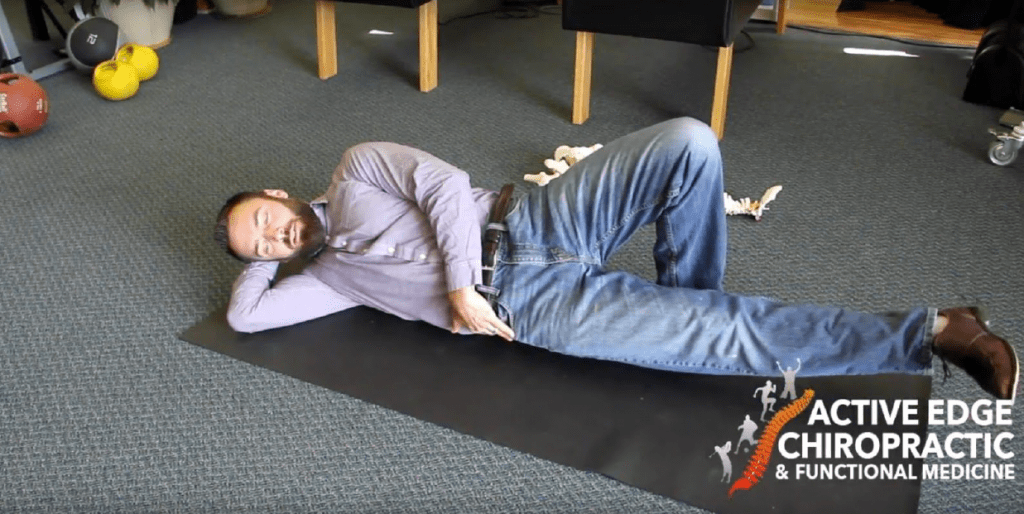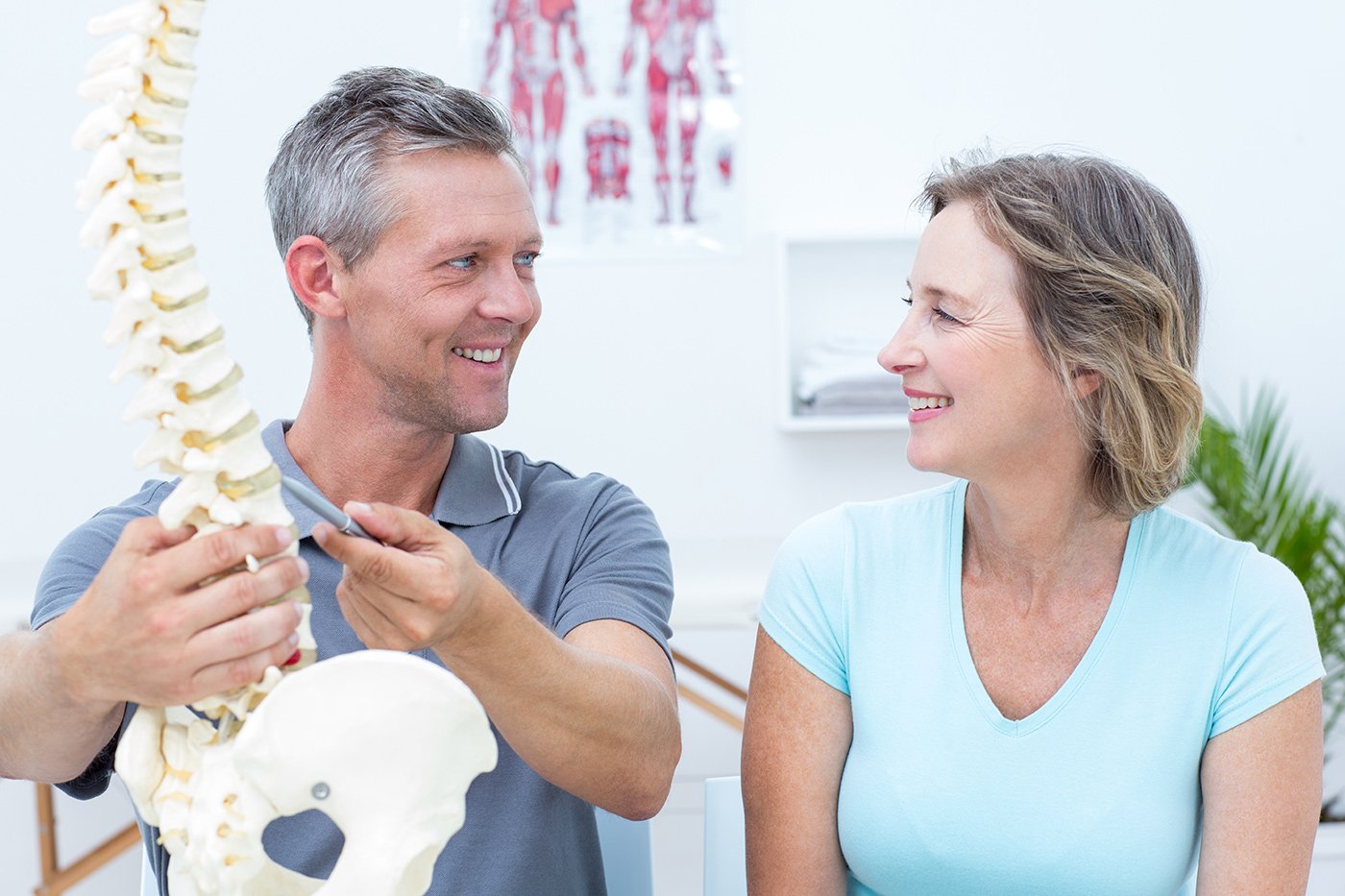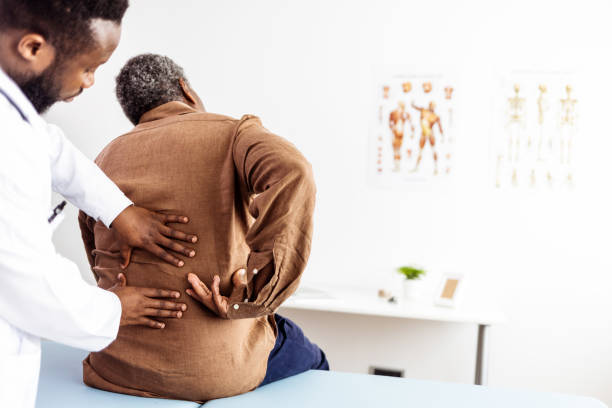
RELEASING TRIGGER POINTS IN THE HIP AND SCIATICA
In order to find trigger points, or tender spots, in the muscles introduced above, one should use the lacrosse ball on the posterior (back) side of the ilium, trochanter, and sacrum. The doctor here is showing the correct location of lacrosse ball placement. The lacrosse ball here is placed on the glute major of the right side, and the right leg is extended. The other leg is bent towards his stomach. In order to create more pressure, the hip can be rotated to the side that the lacrosse ball is on. The ball can be placed as high or as low on the glute as necessary in order to find various trigger points that may be present. The sacrotuberous ligament, as shown above, is lower than the glute muscles. The lacrosse ball may also be placed there, as many trigger points may be present in these areas. The hip joint can also be rotated, bringing the foot both right and left, as these muscles are primarily rotator muscles.
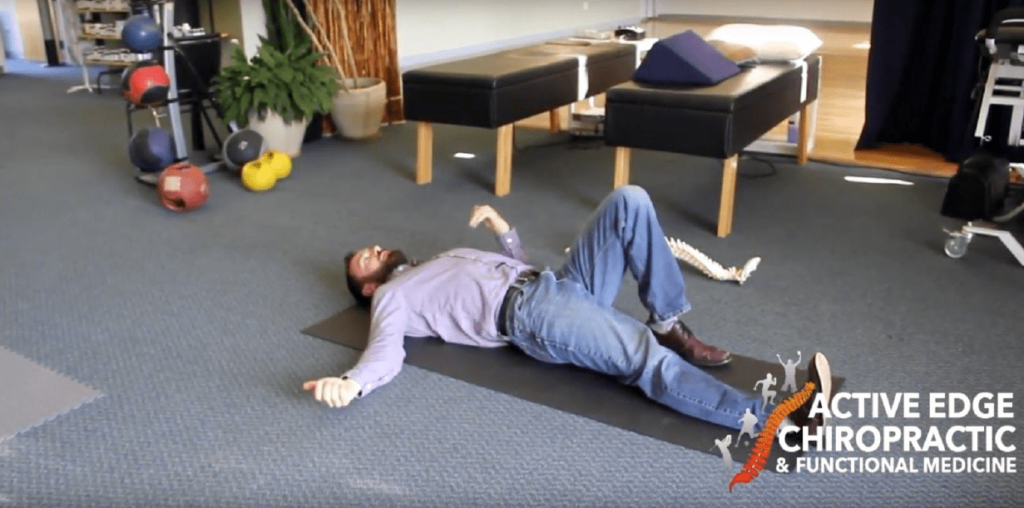
Another position that may be helpful in finding trigger points is to place the lacrosse ball on the outside of the glute, in line with the TFL and trochanter (hip bone). The Doctor is shown here in this position. The pressure gauge in this position is again the left foot. One can bring the hips up into the air or down to the ground based on the amount of pressure that is needed in order to feel the lacrosse ball in the correct muscles. If the lacrosse ball is too intense to start with, one may do this movement on a bed or with a tennis ball instead. Again, the hip may be rotated, bringing the foot that the lacrosse ball is on from left to right in order to release the muscle even more.
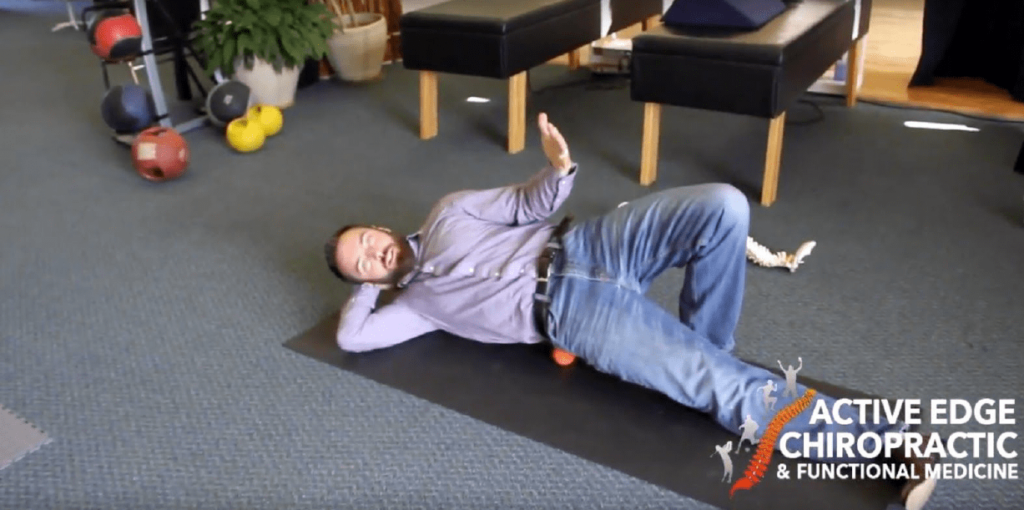
Another position that may be helpful in finding trigger points is to place the lacrosse ball on the outside of the glute, in line with the TFL and trochanter (hip bone). The Doctor is shown here in this position. The pressure gauge in this position is again the left foot. One can bring the hips up into the air or down to the ground based on the amount of pressure that is needed in order to feel the lacrosse ball in the correct muscles. If the lacrosse ball is too intense to start with, one may do this movement on a bed or with a tennis ball instead. Again, the hip may be rotated, bringing the foot that the lacrosse ball is on from left to right in order to release the muscle even more.





